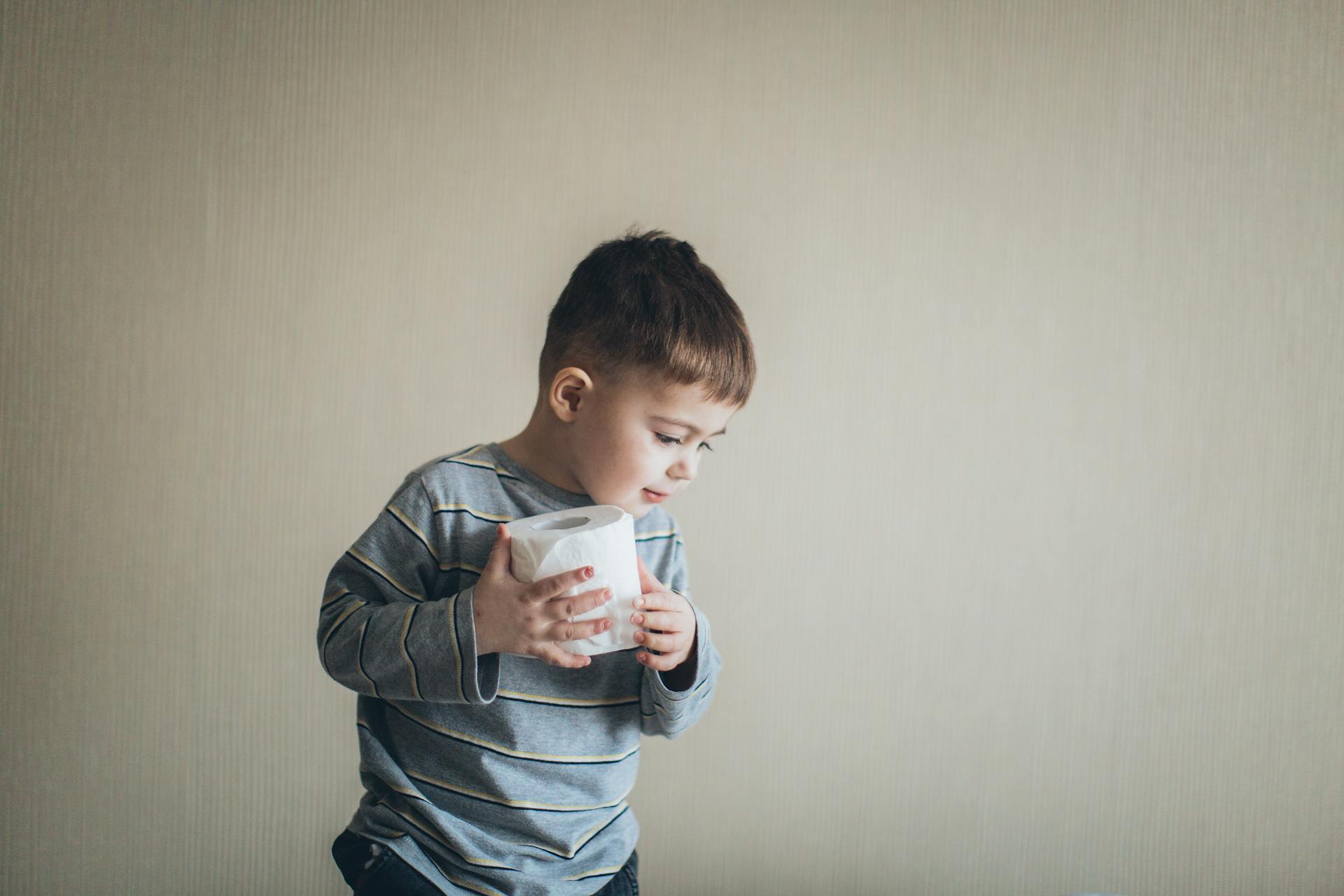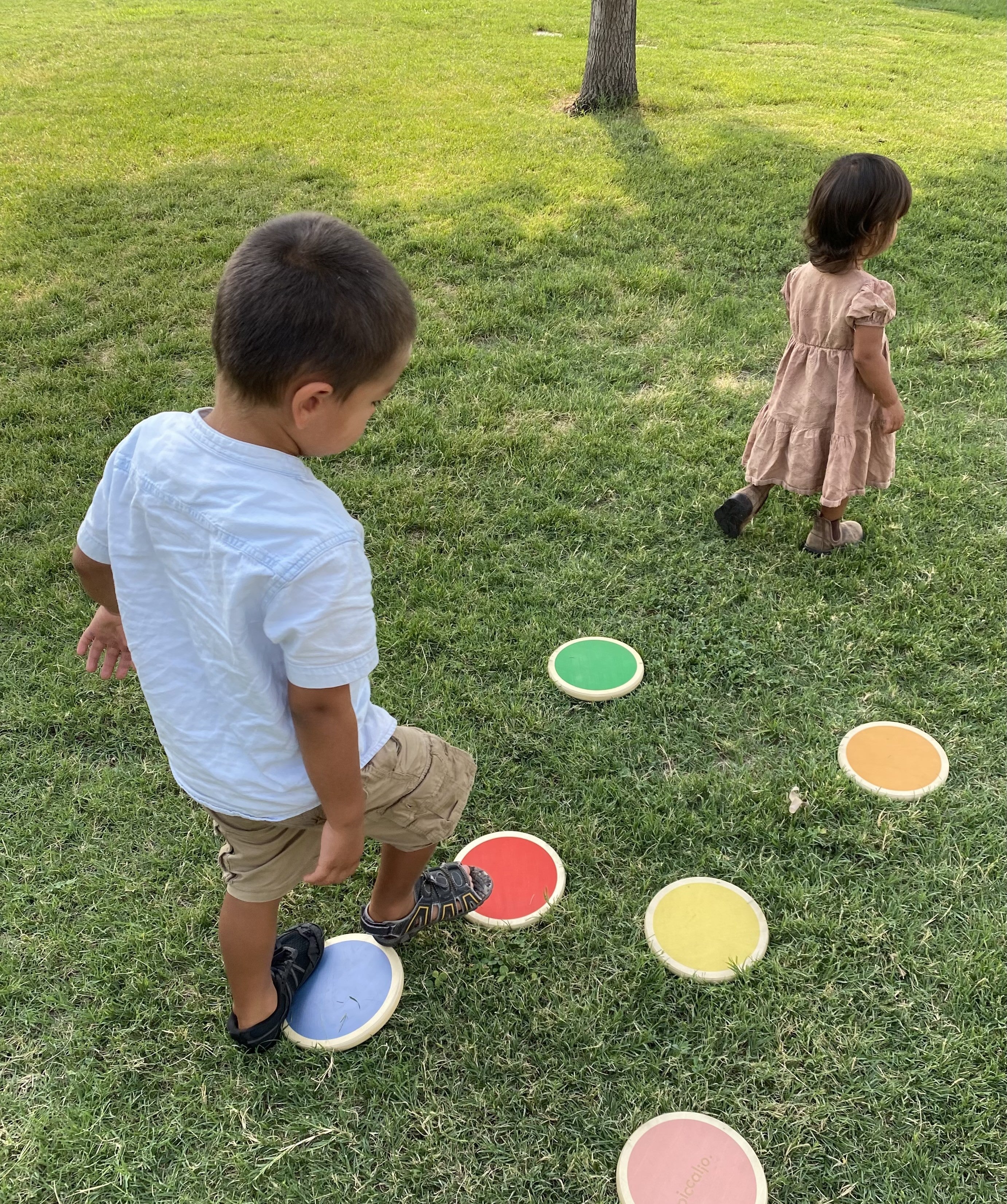Separation anxiety is a normal developmental milestone for babies and toddlers. I remember leaving my oldest crying at my mother-in-law's house, whom he loves, before heading off to work. Watching your toddler experience separation anxiety is heart-wrenching, but also a normal part of growing up.
So, what can you do about it? As a mom of three and a former Montessori teacher, I've experienced separation anxiety on both sides of the interaction. Here are some tips for managing this difficult period.
What is Separation Anxiety?
Separation anxiety is a developmental stage children experience between about 9 months and 3 years of age. Children cry or show signs of being upset when their primary caregiver leaves. Even something as simple as leaving the room may trigger a bout of crying.
Some common signs of separation anxiety are:
- Showing anxiety or nervousness around strangers
- Crying when you leave
- Clinging to you or refusing to go to another caregiver
- Pleading or asking you not to leave them at daycare or preschool
In most cases, separation anxiety slowly goes away by the time your child is about 3 years old. So, why does it happen? According to the American Academy of Pediatrics, it depends somewhat on brain development.
Separation Anxiety in Babies and Toddlers
Babies as young as 5 months of age may start showing some signs, such as wariness of strangers. In babies, separation anxiety usually begins when they begin to grasp object permanence. This means they understand you still exist when they can't see you.
If you leave the room, your baby now knows you are gone, which is very upsetting. Your baby isn't sure when or if you'll come back at all, especially given their sense of time is not well developed.
In toddlers, separation anxiety usually peaks around 18 months. Over time, your child will build more coping skills. Plus, your child will have a better sense of their routines and know they'll see you again after being apart.
Separation Anxiety in Preschoolers
Preschoolers and older children may also feel anxious about spending time away from you. Especially when starting a new school or activity, your child might resist leaving you.
At this point, children know that they can influence you. They might cry or plead with you, trying to make you change your mind. The AAP says the distress may be real, but your child may also be making a real effort to change your mind. Similar to handling a tantrum, it's important for parents to remain calm and stay consistent.

What is Separation Anxiety Disorder?
In some cases, a child's separation anxiety may go beyond the normal developmental stage. If your child's separation anxiety seems severe or doesn't get better over time, they may have a disorder.
According to the Mayo Clinic, separation anxiety disorder "is diagnosed when symptoms are much more than expected for someone's developmental age and cause major distress or problems doing daily activities."
This disorder is a type of anxiety disorder that may need support from a professional. In preschoolers, your child may cry and fuss excessively about going to school. Older children may get other symptoms like stomachaches or headaches when they need to go to school or face separation from you.
If you're concerned about your child's separation anxiety, talk to your child's pediatrician. They can offer support and resources to help you take the next best steps.
Tips for Toddler Separation Anxiety from Mom or Dad
As a mom and teacher, I've seen some strategies work better than others, especially for children at the toddler or preschooler stage. Here are my best tips:
1. Keep it Short and Sweet
Dragging out goodbyes can be more stressful for you and your child. Your child's cries and begging can make you feel guilty about leaving. Yet, if you stay longer and longer, your child may feel betrayed when you leave.
Instead, aim for a short goodbye. If necessary, set boundaries like "one hug and one kiss." As a teacher, I've seen many parents offer "one last hug" about twenty times. This makes it hard to finalize the goodbye and move on.
Remember, your child will likely only cry for a few minutes after you leave. I've been on both sides, and I know it can be hard to leave your child crying, worrying they'll cry for hours. As a teacher, I can confirm that most of the time, children move on and are happier within a few minutes.
Once, I had a kindergartener who would cry for about 10 to 15 minutes every morning. After a few weeks, she stopped. This is also very common for older children getting used to going to a new school.
2. Tell the Truth
Some parents lie and tell their little ones they're "just going to the other room" or "I'll be back in five minutes." This creates confusion.
Once, I also had a parent who said they were leaving but then hung around the building for nearly an hour afterward. The child caught a glimpse of their parent and became upset all over again.
Building a sense of routine means that parents need to tell the truth. You can say, "I'm going to go now. I'll pick you up after snack and play time." Then, when you follow through, your child will learn to accept the routine and know when to expect you to pick them up.
3. Be Consistent
Sometimes, separation anxiety comes and goes. If your child is tired, sick, or has a new sibling, they might feel more upset about leaving you. Keeping a similar approach to saying goodbye can help your child feel secure in your routine. Also, if you make exceptions, your child will learn that they can influence you into changing your mind.
What About Parental Preferences?
In some cases, little ones easily separate from one caregiver but not another. I was often surprised when my husband would report he'd dropped off our youngest without a fuss. He always cried for me!
This is normal and usually passes with time. Sometimes, you can even take advantage of an easier separation by having the parent with an easier transition do drop-offs.
Tips for Toddler Separation Anxiety at Night

My six-year-old sometimes still requests that I lie down with him until he falls asleep. Truth be told, my ten-year-old occasionally makes the same request. And sometimes, I do snuggle with them as an extra part of their bedtime routine.
They are well beyond the age of separation anxiety, but sleeping alone isn't always their favorite. When you consider the history of humans, sleeping alone is a very new development. So, it's understandable that many toddlers and children would prefer not to sleep alone. That said, I understand that most parents want their young children to sleep independently.
Toddler separation anxiety at sleep time can simply be a fear of the dark. Other children have a hard time calming their minds enough to fall asleep without help. If your child struggles with separation anxiety at bedtime, it's important to follow similar guidelines:
Use a Bedtime Routine
Spend some time snuggling, reading books, or singing lullabies to give your child reassurance.
Be Consistent
If your child gets up or calls for you, stay calm and quiet. Simply return your child to bed and reinforce the idea that it's time for bed.
Offer Extra Comforts
A night light or special stuffed animal can help your little one feel more comfortable about sleeping on their own. My youngest loved putting on a special night light that displayed stars.
Need more tips on sleep? Read this post featuring advice from pediatrician Dr. Dauer.
Surviving Separation Anxiety
Separation anxiety can cause difficult moments for both you and your child. Yet, before you know it, you'll be on to the next exciting stage and its associated challenges.
Sources:












Leave a comment
This site is protected by hCaptcha and the hCaptcha Privacy Policy and Terms of Service apply.